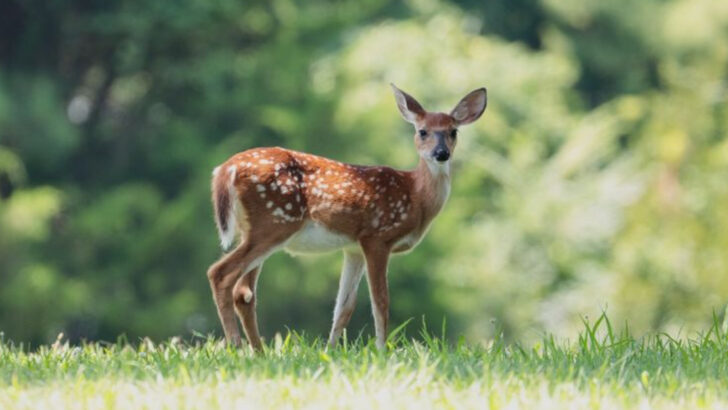Gateway Arch National Park is not only renowned for its iconic structure but also for the remarkable wildlife that thrives within its boundaries.
This park offers a unique blend of urban and natural environments where various species find refuge.
Whether you’re a local or a visitor, encountering these animals can be a highlight of your visit.
Discover the diverse and captivating wildlife that calls this park home, from the smallest insects to majestic birds, each contributing to the vibrant ecosystem.
Here are 13 must-see animals that you might encounter at Gateway Arch National Park.
American Bald Eagle
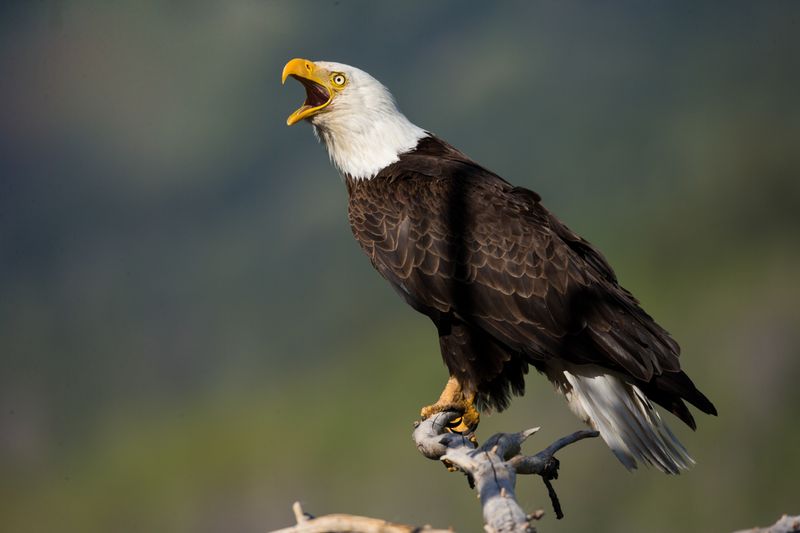
Perched high in the skies, the American Bald Eagle is a symbol of freedom and strength. These magnificent birds are often seen soaring gracefully above the Mississippi River adjacent to Gateway Arch National Park.
Their keen eyesight enables them to spot fish swimming below, making them expert hunters.
Did you know? Despite their name, bald eagles aren’t actually bald. The term ‘bald’ comes from an old English word meaning ‘white-headed,’ a nod to their distinctive appearance. Witnessing a bald eagle in flight is an extraordinary experience, one that resonates with the spirit of wilderness and awe.
Red Fox
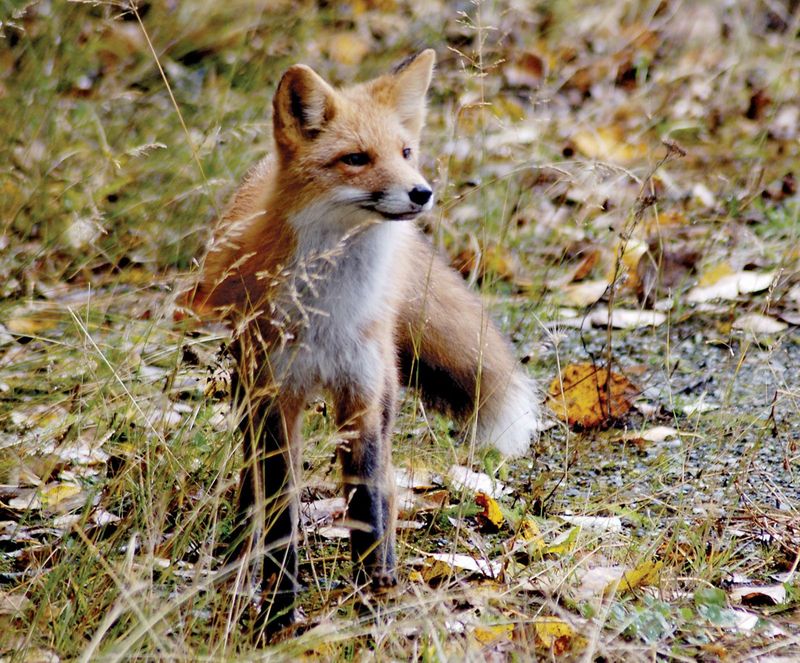
With a sly glance and a bushy tail, the Red Fox is a master of stealth and cunning. These clever creatures often roam the edges of Gateway Arch National Park, blending seamlessly into their surroundings.
Known for their adaptability, red foxes can thrive in both urban and rural settings. Their playful demeanor is a delight to observe, especially when young foxes, called kits, are learning the ways of the world.
These fascinating animals are not only skilled hunters but also caring parents, teaching their young essential survival skills through playful interaction.
Eastern Cottontail Rabbit
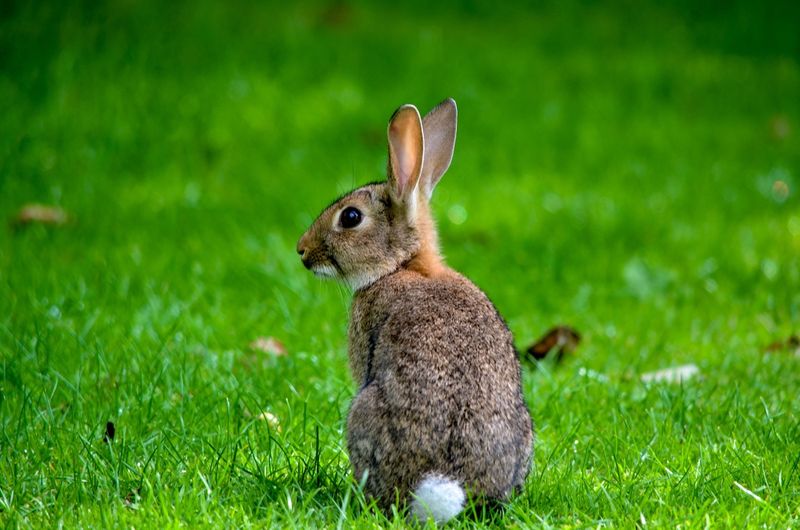
With its fluffy tail and twitching nose, the Eastern Cottontail Rabbit is a picture of charm and agility. These rabbits are frequently spotted hopping gracefully through the meadows of Gateway Arch National Park.
Known for their remarkable speed, they can quickly dart into the underbrush to escape predators. Their diet consists mainly of grasses and clover, which they nibble on with great enthusiasm.
Often, you’ll see these gentle creatures in the early morning or late afternoon, when the park is quiet and the sun casts a gentle glow across the landscape.
Great Blue Heron
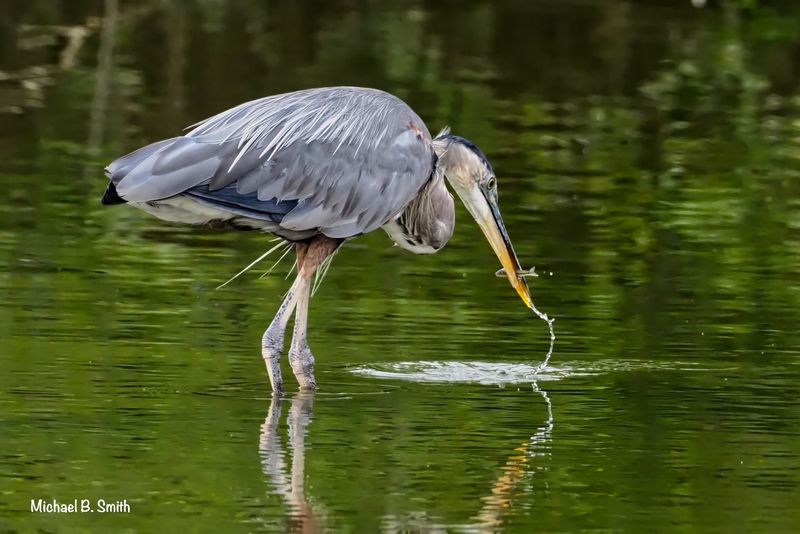
Standing tall and elegant, the Great Blue Heron is a master of patience and precision. These birds are often seen wading through the shallow waters of the Mississippi River, hunting for fish with effortless grace.
Their striking blue-gray plumage and long legs make them easily recognizable. Did you know? Great Blue Herons have a wingspan that can reach up to six feet, allowing them to glide gracefully through the air.
Watching a Great Blue Heron in action is a serene experience, a reminder of the tranquil beauty of nature.
Monarch Butterfly
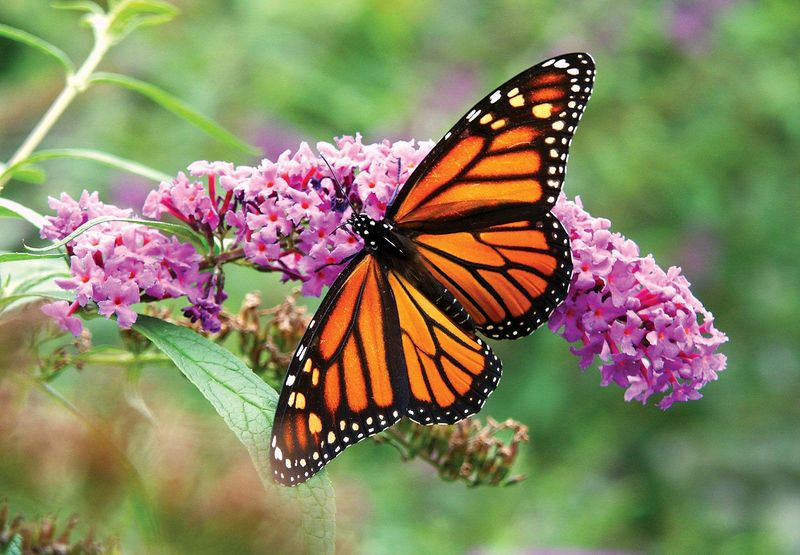
Fluttering with grace and vibrancy, the Monarch Butterfly is a symbol of transformation and endurance.
These stunning insects can be seen gliding among the wildflowers of Gateway Arch National Park, adding a splash of color to the landscape. Known for their epic migration journey, monarchs travel thousands of miles from North America to central Mexico.
Their distinctive orange and black wings serve as a warning to predators about their unpalatable taste. Spotting a monarch butterfly on its migratory path is a magical moment, celebrating the wonders of nature’s resilience and beauty.
White-tailed Deer
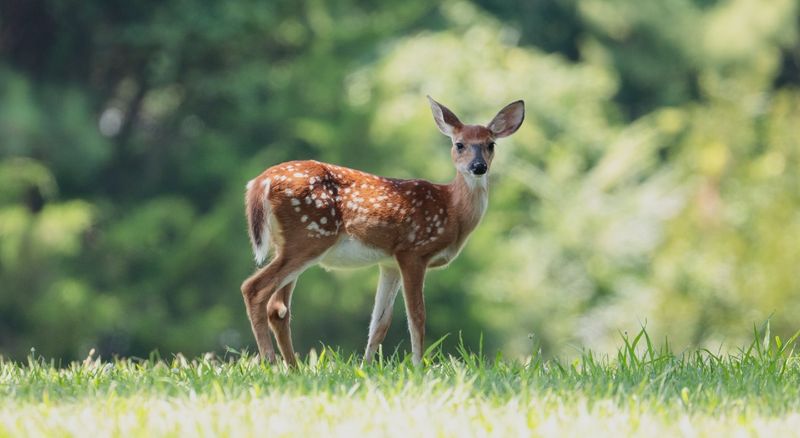
Elegant and serene, the White-tailed Deer is a familiar sight in the wooded areas of Gateway Arch National Park.
These gentle creatures are often seen grazing at dusk, their white tails flicking as they move through the underbrush. Known for their agility, they can leap and bound with remarkable speed when startled. The young, known as fawns, are born with a spotted coat, providing them with natural camouflage.
Observing a white-tailed deer in its natural habitat offers a glimpse into the peaceful side of nature, a serene experience for visitors.
Pileated Woodpecker
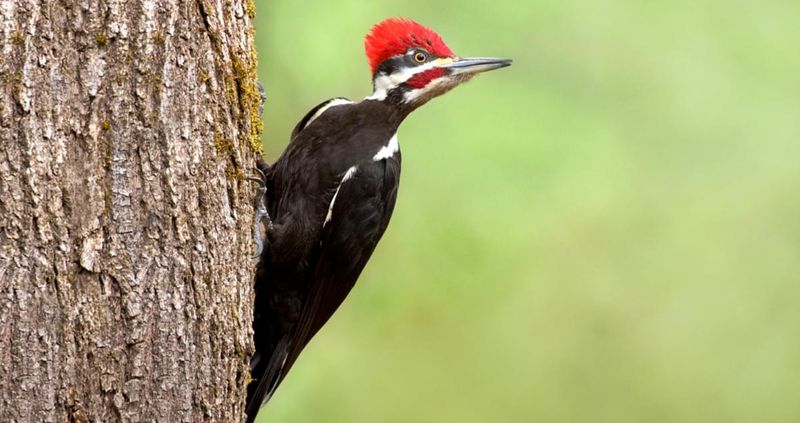
With a distinctive red crest and powerful beak, the Pileated Woodpecker is a sight to behold. These impressive birds are known for their drumming on tree trunks, a sound that resonates through the forested areas of Gateway Arch National Park.
Their striking appearance and loud calls make them easy to spot. Fun fact: Pileated woodpeckers create large rectangular holes in trees, which provide shelter for other birds and small mammals.
Their presence is a testament to the park’s thriving ecosystem, where each species plays a vital role in maintaining balance.
Eastern Bluebird
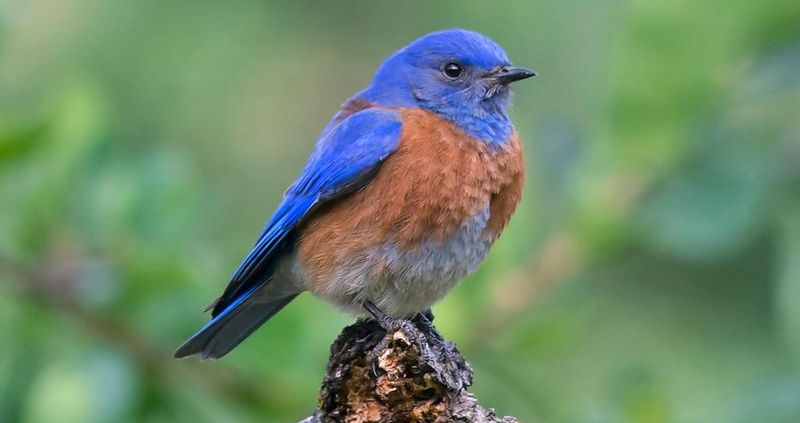
With its vibrant blue feathers and cheerful song, the Eastern Bluebird is a delightful sight. These charming birds are often seen perched on branches, singing to welcome the morning light at Gateway Arch National Park.
Known for their sweet disposition, they are a favorite among birdwatchers. Eastern bluebirds primarily feed on insects and berries, which they skillfully catch in mid-air or pluck from trees.
Their presence in the park heralds the arrival of spring, a joyful reminder of renewal and the beauty of life.
Gray Squirrel
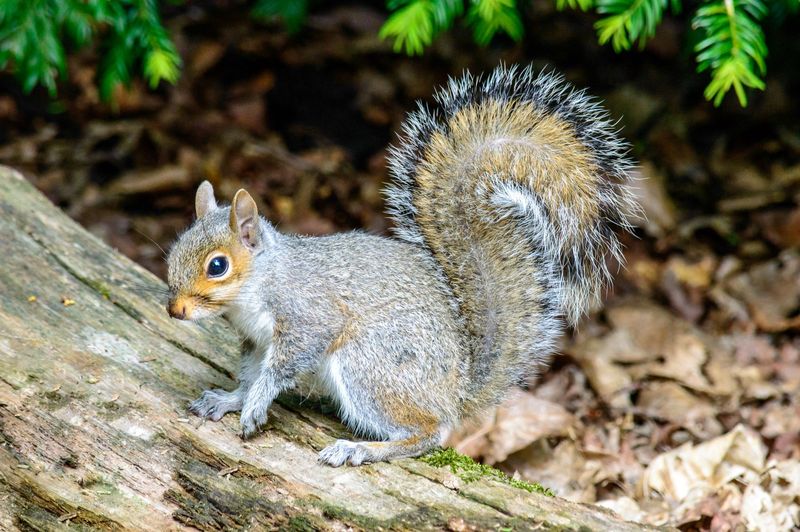
Playful and energetic, the Gray Squirrel is a common resident of Gateway Arch National Park. These lively creatures are often seen leaping from branch to branch, their bushy tails adding balance to their acrobatics.
Known for their cleverness, gray squirrels are expert foragers, gathering nuts and seeds for their winter stash. They are also known to plant trees inadvertently by forgetting some of their buried acorns.
Watching a gray squirrel in action is an entertaining sight, showcasing nature’s ingenuity and the importance of preparation.
Mallard Duck
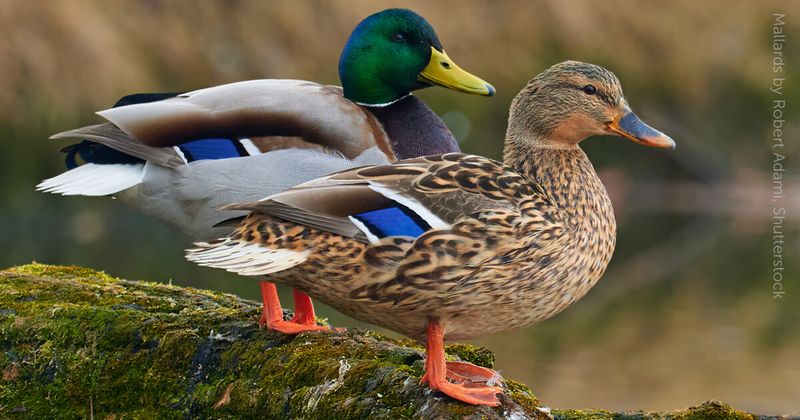
Gliding gracefully on the waters, the Mallard Duck epitomizes tranquility and elegance. Often seen in groups, these ducks inhabit the Mississippi River near Gateway Arch National Park.
The males, with their distinctive green heads, and females, with more subdued coloring, create a harmonious scene. Mallards are dabbling ducks, feeding on aquatic plants and small invertebrates.
They are known for their adaptability, thriving in diverse habitats. Observing mallard ducks in their serene environment provides a sense of peace and connection to the natural world.
Northern Cardinal
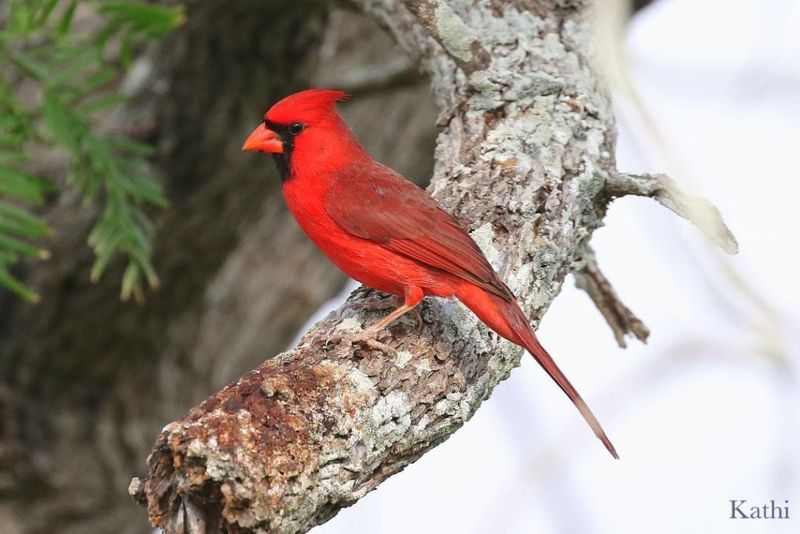
With a striking red plumage, the Northern Cardinal is a vibrant presence at Gateway Arch National Park. These birds are often seen perched among green foliage, their clear, melodious song adding music to the park’s atmosphere.
Cardinals are known for their strong bond with their mates, often seen feeding each other as a sign of affection. Their diet consists mainly of fruits and seeds, which they skillfully crack open with their sturdy beaks.
Spotting a northern cardinal is a treat for the senses, a vivid reminder of nature’s colorful bounty.
Snapping Turtle
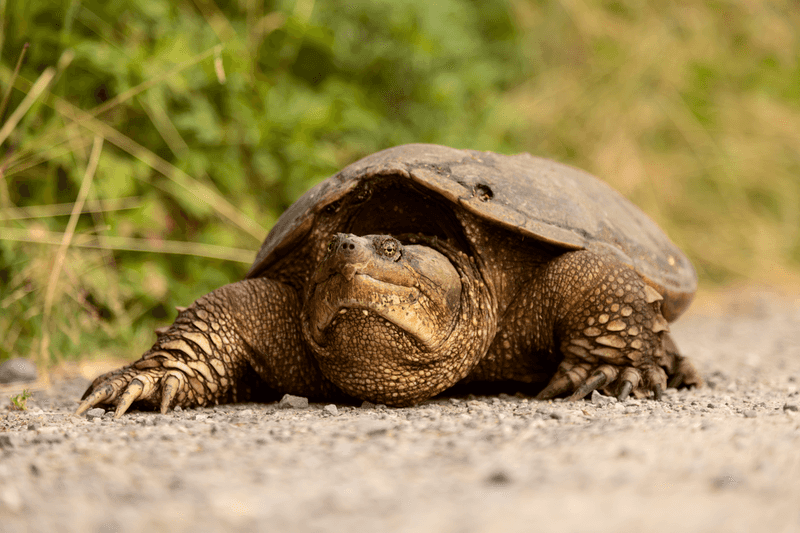
With its prehistoric appearance, the Snapping Turtle is a fascinating inhabitant of Gateway Arch National Park. These turtles are often seen resting on logs near ponds, soaking up the sun.
Known for their strong jaws and aggressive nature, they play a crucial role in the ecosystem by controlling fish populations. Despite their intimidating look, snapping turtles are not typically aggressive unless provoked. Their ancient lineage and resilience make them a symbol of endurance.
Observing a snapping turtle in its natural setting offers a glimpse into a world that’s both ancient and enduring.
American Robin
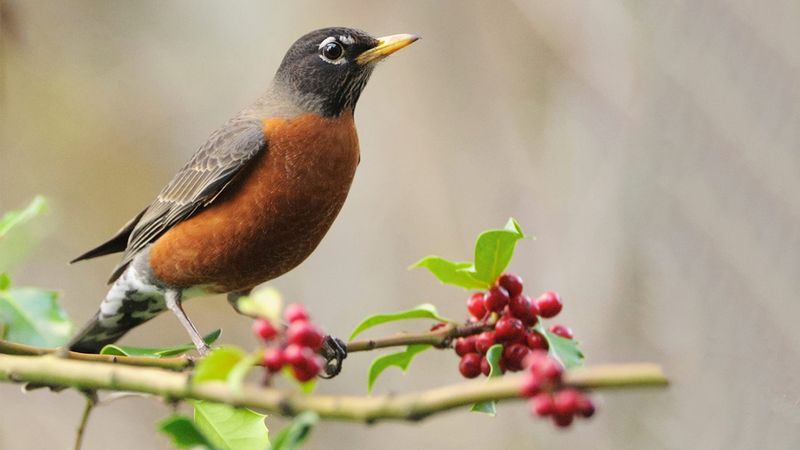
With its cheerful demeanor and distinctive red breast, the American Robin is a harbinger of spring. These birds are often seen hopping along the grassy areas of Gateway Arch National Park, diligently searching for worms and insects.
Known for their melodious song, robins fill the air with music that signals the changing seasons. Their adaptability to urban and natural environments makes them a common sight.
Watching an American robin go about its daily routine is a comforting reminder of nature’s cycles and the continuity of life.

